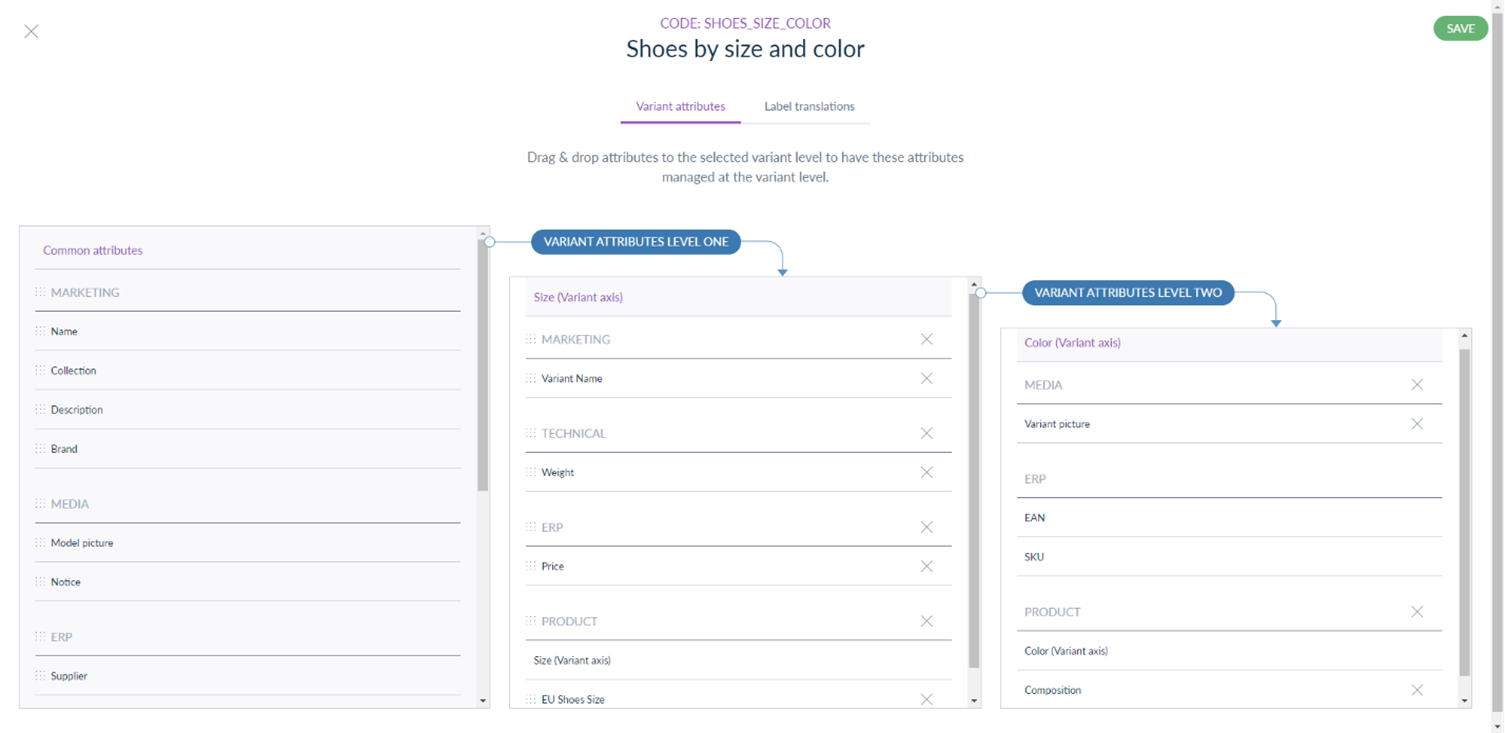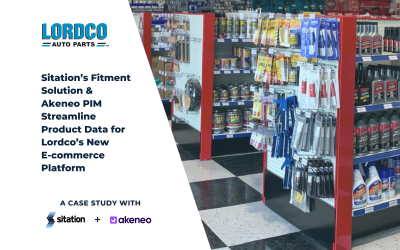Akeneo Product Information Management (PIM) offers a simple and fast method for working with your product data. One of the software’s strong suits, you can enrich the common properties of several product variations in one place by creating a product model.

First, what is an axis attribute? In a nutshell, it is the differentiating attribute that creates a product variation. Like it sounds, an axis attribute creates an axis within a product model where the attributes become a differentiating quality. In technical terms, an axis attribute is specific to each product on that axis rather than common to all products within a family.
Before selecting axis attributes, you will need to set up your family variant which determines the structure of your product model. In Akeneo, you can have up to two variant axes, with up to five attributes on each axis. It is also important to keep in mind that the attribute used as the axis must be a structured attribute type such as simple select, reference entity simple select, measurement, or boolean. Also, if using Magento, the measurement type cannot be used as the axis attribute.
QUESTIONS TO ASK YOURSELF WHEN CHOOSING YOUR AXIS ATTRIBUTES
Which of my product attribute(s) differ between product SKUs?
Using the shoe example shown above, let’s say that you have a particular brand of shoes that comes in a variety of sizes and colors, but they all have the same description. For this shoe, we have three attributes: color, size, and description. Which attribute(s) would make a good axis? Color and size could each be considered a variant axis attribute because they vary from product to product.
How are my potential axis attributes linked?
It is important to determine the relationship between your product’s attributes. Following the example above, we can first consider the size attribute. Does each size have either one or multiple color options? In the case of having multiple color options, each color/size configuration should have a different SKU and size which is a good indication that color will be an axis attribute. The product description would not make a good axis attribute because it is the same for each product within the model. However, if the shoe’s description changed for each product variation to include the color of the shoe, it could be considered as an axis attribute.
What are my universally common attributes?
Your common attributes consist of the attributes that are the same across all products within your product model. Some of the frequently used common attributes include brand, manufacturer, and name. Grouping these attributes together on the common level allows for quick updates for all products within your model. In our shoe example, the product description would be considered a common attribute.
Do I need one variant axis or two?
That is a tough question and one that varies based on a few different factors. If mapping your PIM to your ERP is a concern, it would probably be best to stick with one axis when possible (with up to five attributes). That is because most ERP systems do not have more than one level of variation which is a showstopper for an import. However, with the shoe example in which each shoe can vary on size and/or color, it would be acceptable to have color as your first axis variant and size as your second axis variant. And, for a product such as tape in which length is the only attribute that differentiates each product within a product model, it would be best to have only one variant axis for length.
Properly selecting your axis variants has an impact on product enrichment as well as the customer experience. Thorough planning to determine what makes sense for your products is always time well spent.




